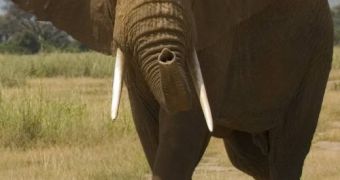Elephants are, at this point, the largest land mammals on Earth, and are only surpassed in size by some species of whales, which dwarf them. But they weren't always at the top of the size chart. Dinosaurs and mammoths were just a few of the creatures that made elephants look like babies, but now researchers have identified yet another creature, which they say is the oldest known relative of one of the most intelligent animals on Earth today. The ancestor lived more than 60 million years ago, scientists from the National Museum of Natural History (NMNH) in Paris, France, recently announced.
But the “new” fossil, of the species Eritherium azzouzorum, would not have reminded of an elephant to anyone walking past it when it lived. At a height of only 1.6 to two feet (50 to 60 cm), and having a weight of about nine to 11 pounds (four to five kg), the small animal would have most likely been considered harmless, and too plain to even consider kicking. This was what the archeology team digging in Morocco first thought as well. However, upon analyzing the remains, they came across a big surprise.
Upon investigating the specimen's teeth and skull, NMNH expert Emmanuel Gheerbrant discovered that the animal had an enlarged first incisor, despite the fact that it had no trunk. Upon closer inspection, he realized that the formation was nothing more than a primitive tusk, albeit many times smaller than those of elephants today. “The trunk evolved with the modern elephant group, called elephantiform, at the beginning of the Oligocene [33.7 million to 23.8 million years ago],” Gheerbrant shared for LiveScience.
In a paper published in the June 22nd issue of the respected scientific journal Proceedings of the National Academy of Sciences (PNAS), the researcher writes that, with the new find, the ancestry of the modern elephant can be tracked back to the Late Paleocene. The oldest known fossil of an ancestor was discovered in Morocco as well, but it was “only” 55 million years old. The research was made possible by a fruitful collaboration between the Ministere de l’Energie et des Mines, the Office Cherifien des Phosphates of Morocco, and Universities Cadi Ayyad, in Marrakech, together with the Chouaîb Doukkali, in El Jadida.

 14 DAY TRIAL //
14 DAY TRIAL //